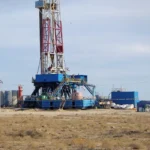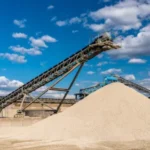Understanding Hydraulic Fracturing: Process, Advantage & Market Outlook

Hydraulic fracturing, commonly known as “fracking,” is a cornerstone of the modern U.S. energy landscape, enabling the extraction of vast oil and natural gas reserves. This guide offers a clear, in-depth look at what hydraulic fracturing is, how it works, its benefits and drawbacks, and what the future holds for U.S. operators and suppliers.
For those in the industry seeking reliable, high-performance fracturing chemical solutions, this overview provides essential context, aligning with the specialized products offered at Sunitausa.com.
What Is Hydraulic Fracturing?
Hydraulic fracturing is an advanced well stimulation technique used to extract natural gas and oil from deep underground rock formations. Although its origins trace back to the 1940s, the technique’s widespread adoption began with the U.S. shale revolution, where it was combined with horizontal drilling to unlock previously inaccessible resources.
This combination has been pivotal, transforming the United States into a global energy leader by making the recovery of hydrocarbons from low-permeability shale formations economically viable. The hydraulic fracturing definition centers on creating fractures in a rock layer by injecting pressurized liquid to release trapped resources.
The Hydraulic Fracturing Process: Step-by-Step
The hydraulic fracturing process is a multi-stage operation that requires meticulous planning and execution. Here’s how it works:
Site Preparation and Well Drilling
Operations begin with site clearance, pad construction, and the drilling of a vertical wellbore. This well often transitions to a horizontal section that extends through the target rock formation. Horizontal wells are crucial as they maximize contact with the reservoir, significantly enhancing the productivity of resources like shale.
Casing and Cementing
Once the well is drilled, steel pipes called casings are inserted into the hole and cemented in place. This creates multiple protective layers that isolate the wellbore and prevent the migration of fluids into surrounding groundwater zones, ensuring environmental protection.
Perforation
With the casing secure, small, strategically spaced explosive charges are detonated within the horizontal portion of the well. This process, known as perforation, punctures the casing and cement, creating channels that allow fracturing fluid to enter the surrounding rock formation.
Hydraulic Fracturing (Fracking)
A specially blended fracturing fluid composed of over 90% water, 9% proppant (like sand), and 1% chemical additives is pumped into the well at pressures exceeding 10,000 psi. This immense pressure creates fissures in the rock. The sand or other proppants hold these fractures open, allowing oil or gas to flow freely.
Flowback and Production
After fracturing is complete, the pressure is reduced. The injected fluids, now called “flowback,” return to the surface, carrying the released oil or gas. This mixture is captured for commercial production, and the well transitions into its operational phase. The returned water is managed according to stringent regulations, which may involve treatment, recycling, or disposal.
State-of-the-Art Technologies in Hydraulic Fracturing
The industry continues to innovate with technologies that enhance efficiency and safety. Methods like “plug and perf” allow for precise, multi-stage fracturing along a horizontal well, maximizing resource recovery.
Today, horizontal drilling accounts for approximately two-thirds of all U.S. fracking activity, yielding higher production from fewer well pads. Advances in real-time monitoring and intelligent fracturing provide operators with live data to optimize the process.
Furthermore, significant environmental strides have been made, including increased fluid recycling and the development of biodegradable additives that meet the latest industry standards.
Economic & Energy Benefits of Hydraulic Fracturing
The economic and energy benefits of hydraulic fracturing are substantial. By unlocking vast domestic resources, it has positioned the U.S. as the world’s top oil and gas producer.
The U.S. hydraulic fracturing market is projected to expand from 39,672.5 billion cubic feet (BCF) in 2025 to approximately 85,796.0 BCF by 2035. This boom has reduced America’s dependence on foreign oil, as net petroleum imports were down to 6.8 million b/d, or about one-third less than 2005 volumes.
For consumers, this has translated into lower energy prices. Environmentally, the increased use of natural gas has helped reduce greenhouse gas emissions in the power sector, which have fallen by 32% in 2019 since 2005 as generation shifts away from coal.
Key Advantages and Disadvantages
| Advantages | Disadvantages |
| Unlocks abundant oil and gas reserves | Potential groundwater contamination risks |
| Boosts U.S. jobs and local economies | Requires millions of gallons of water per well |
| Lowers domestic energy prices | Earthquake risk linked to wastewater injection |
| Reduces dependence on imported energy | Greenhouse gas and methane emissions |
| Promotes energy security and trade surplus | Air, soil, and noise pollution at well sites |
| Can support the transition away from coal | Land and ecosystem disturbance |
The Market Outlook
Demand for hydraulic fracturing in the U.S. is projected to grow steadily through 2030, fueled by persistent energy demand, new export opportunities, and ongoing technological progress. The nation’s leadership in fracking technology continues to generate significant opportunities for local service firms, equipment manufacturers and chemical suppliers who support this critical sector.
The Role of Specialty Chemicals and Support Services
Advanced chemical solutions are vital to the efficiency, safety and environmental stewardship of hydraulic fracturing. Additives such as polymers, friction reducers and biocides play crucial roles in optimizing the fracturing process.
Custom chemical blends are designed to improve efficiency, minimize formation damage, and meet the evolving demands of U.S. well completions and environmental regulations.
If you’re searching for advanced, reliable chemical solutions, Sunita Hydrocolloids delivers a wide range of industry-aligned products and technical support tailored specifically to U.S. shale and unconventional plays.
Conclusion: Balancing the Equation
Hydraulic fracturing remains a vital component of the U.S. energy strategy, but its benefits must be continually balanced against its environmental risks. Through innovation, stringent regulation, and a commitment to responsible operations, the industry is working to secure a sustainable and prosperous energy future.
Interested in optimizing your hydraulic fracturing operations or learning which specialty chemicals best fit your needs? Visit our products page or contact our team for tailored data sheets.





